Until 1842, no one had heard of the word ‘dinosaur’.
But when acclaimed anatomist Richard Owen grouped three prehistoric animals with curious features in common, he changed the way the world thought about fossil reptiles.
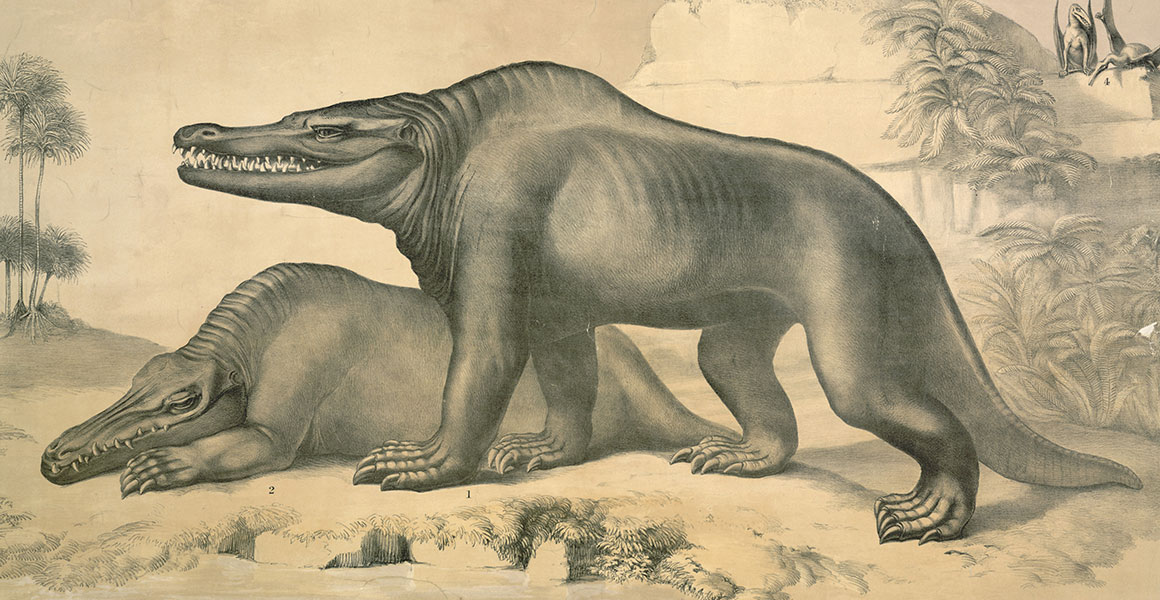
This early reconstruction of two Megalosaurus, drawn by English artist and sculptor Benjamin Waterhouse Hawkins, shows the dinosaurs as having postures like those of large modern mammals, such as hippopotamuses.
Until 1842, no one had heard of the word ‘dinosaur’.
But when acclaimed anatomist Richard Owen grouped three prehistoric animals with curious features in common, he changed the way the world thought about fossil reptiles.
People everywhere have probably been stumbling upon dinosaur bones for millennia without knowing what they were. It’s possible these rogue fossil discoveries may even have been one of the inspirations for dragons.
It hasn’t been an easy road for dinosaurs – for about 80 years many scientists didn’t think of them as a real group. But since the 1970s the ‘terrible lizards’ have clawed their way back in favour with palaeontologists.
Sir Richard Owen (1804-1892) was one of the most famous comparative anatomists of his time. Not only did he instigate the separation of the British Museum and its expanding natural history collection, thus founding the Natural History Museum, he also tutored the children of the royal family in science and was famed for feuding with scientific contemporaries, most notably Charles Darwin.
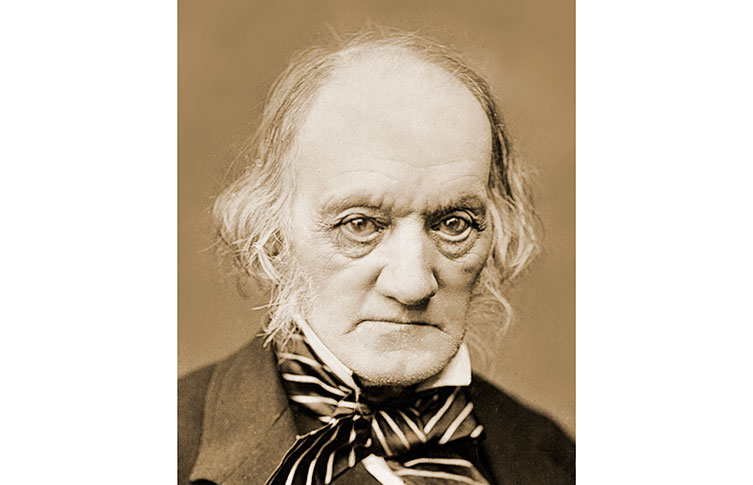
Sir Richard Owen was the first Superintendent of the Natural History Museum, from the day it first opened its doors in 1881 until he retired in 1883.
In the early 1800s a number of fossil discoveries were made in southern England. These included Megalosaurus, which was described by William Buckland in 1824, and Iguanodon and Hylaeosaurus, which were described by Gideon Mantell in 1825 and 1833 respectively. When Owen inspected this trio of finds, he noticed some shared characteristics.
In Iguanodon and Megalosaurus, he could see that vertebrae at the base of the spine – now known as the sacrum – had fused together during the animals’ lifetimes. From fossil fragments, Owen determined that Hylaeosaurus also had this characteristic.
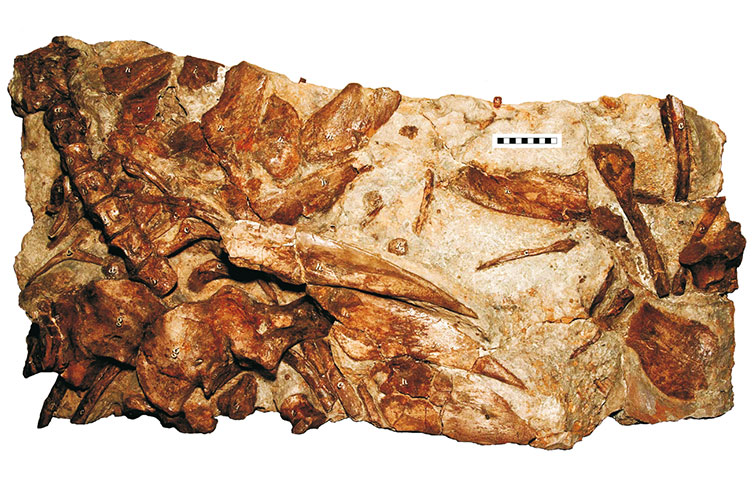
The holotype of Hylaeosaurus, described by Gideon Mantell in 1833. This was one of the three reptiles on which Richard Owen based Dinosauria. © Sven Sachs, Jahn Hornung/ Wikimedia Commons (CC BY 2.5)
From this observation and other similarities, Owen placed the animals in a new group, detailing his findings in his Report on British Fossil Reptiles. His initial speech to the British Association, on which the report was based, was delivered in July 1841 and allegedly lasted two hours.
The term Dinosauria was first used by Owen in his report published in 1842.
Our dinosaur researcher Dr Susie Maidment explains Sir Richard Owen’s discovery.
You’ll often find ‘Dinosauria’, which is rooted in Greek, quoted as meaning ‘terrible lizard’. But in coining the term in his report, Owen refers to dinosaurs instead as ‘fearfully great’, acknowledging their large size – significantly surpassing that of any living reptile.
Despite not having complete fossil skeletons to work with, palaeontologists of the time attempted to work out the size of dinosaurs. Some scaled up living lizards and according to these estimates, the dinosaurs were some 60 metres long.
Owen was sceptical of these massive sizes. So, he measured individual vertebrae and estimated how many the animals might have had based on those of living crocodiles. This gave more realistic lengths – around nine metres for Megalosaurus and Iguanodon.

A watercolour illustration of the three ancient reptiles by Benjamin Waterhouse Hawkins.
Other scientists continued to use modern-day lizards as a model, with dinosaurs featuring legs that splayed out from the sides of their bodies. But Owen was sure that the animals’ legs would have been directly under their bodies to support their large sizes. He depicted them in a similar fashion and proportion to modern mammals that walk on four legs.
Later research based on Owen’s ideas about dinosaur posture is now one of the key features used to differentiate them from non-dinosaurian reptiles.
When Owen announced the new group Dinosauria, he referred to the animals as fossil lizards, but also stated they were similar to pachydermal mammals – a taxonomic group that’s no longer used. This group included large animals with thick skin, such as elephants and hippopotamuses.
This might explain why the stocky 1850s dinosaur models at Crystal Palace, for which Owen was a scientific advisor, have a hint of rhinoceros about them.
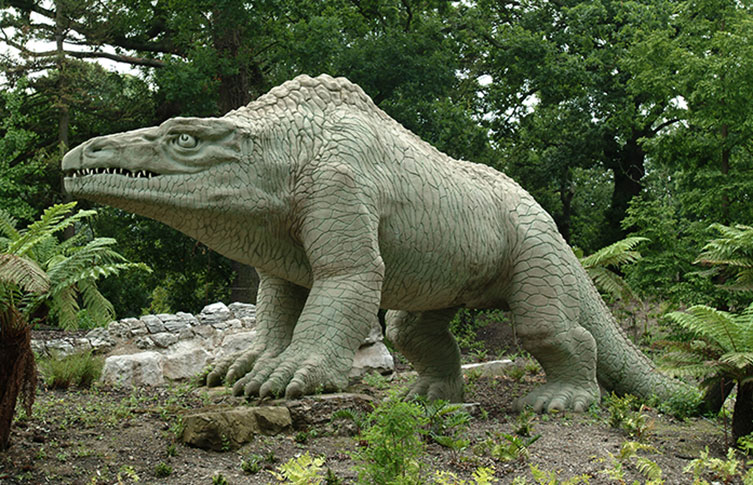
The Megalosaurus sculpture in Crystal Palace Park. Sir Richard Owen was a scientific advisor on the form the Crystal Palace models should take, resulting in these nineteenth century dinosaur reconstructions looking a bit like large mammals.
Megalosaurus is thought to be the first dinosaur described in scientific literature. But based on a fossil uncovered in the seventeenth century, it could have been known by a different name.
In the mid-1600s, a fossil bone was acquired by Dr Robert Plot, the first keeper of Oxford’s Ashmolean Museum, who noted that it looked almost exactly like the lower part of a human femur. Plot included an illustration of the peculiar fossil in his 1677 book The Natural History of Oxford-shire – but the piece lacked a name.
The fossil was found in the Oxfordshire parish of Cornwell. Although Plot didn’t detail the rock type that the fossil was found in, quarries in that part of the UK are made up of limestone dating to the Middle Jurassic.

Dr Robert Plot (1640-1696) was an English naturalist and the first keeper of Oxford’s Ashmolean Museum.
English physician Richard Brookes reviewed Plot’s work in 1763 in his compilation of books, A New and Accurate System of Natural History. In volume five he named Plot’s fossil Scrotum humanum, simply stating that “stones have been found exactly representing the private parts of a man”.
But as it turned out, neither Plot nor Brookes knew what the fossil really was.
Scrotum humanum isn’t a name used today – although it could have been. The Linnaean system for scientific naming began in 1758, five years before the bone was described. Plot’s fossil was later thought to be from Megalosaurus. As Scrotum had been described 60 years earlier, Megalosaurus could have been considered a synonym.
However, Plot’s fossil is now lost and scientists today can’t confirm whether it was from a Megalosaurus.
In the 1990s, the International Commission on Zoological Nomenclature determined that Scrotum humanum didn’t constitute a valid scientific name. So, Brookes’s descriptive name was officially disregarded and Megalosaurus retained its claim to fame as the first official dinosaur.
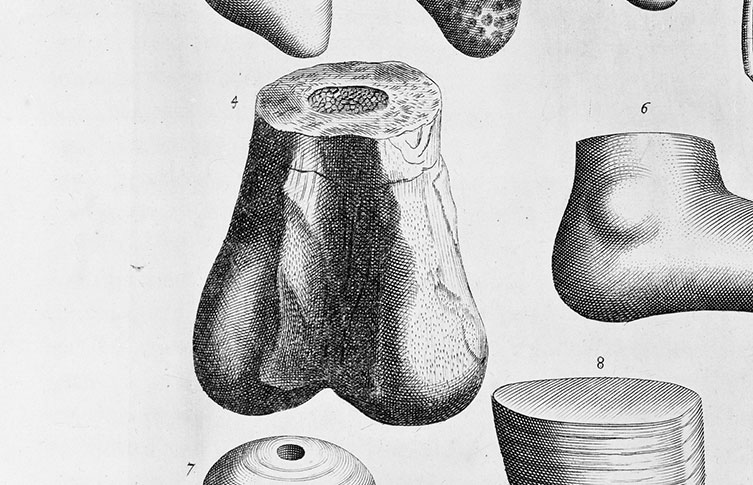
Plot’s illustration of the unnamed fossil that he speculated could be from a giant human (Fig. 4). It was later thought to be from Megalosaurus.
Owen’s Dinosauria almost met an end in the late 1800s. Increasing fossil reptile discoveries were being made and palaeontologists began searching for ways to tie the animals together.
Two key groups emerged: the ornithischians, meaning bird-hipped, and saurischians, meaning lizard-hipped. Over time the concept of the clade Dinosauria drifted out of favour, with it considered nothing but a collection of only distantly related reptiles.
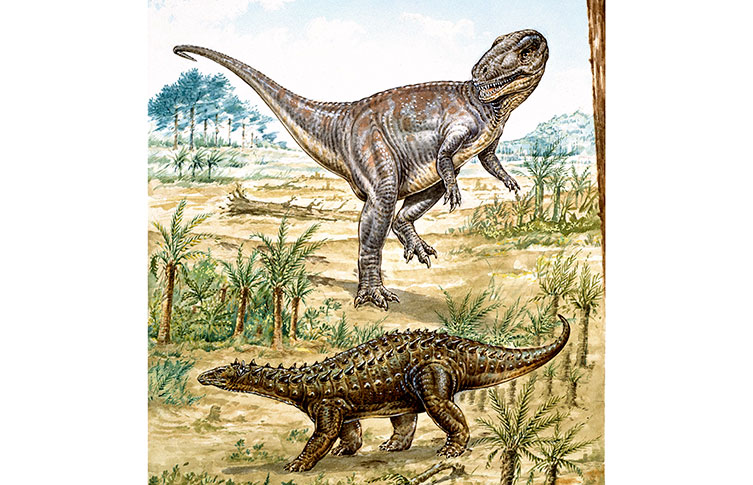
This illustration shows a scene from the Jurassic Period, which lasted from 201 million to 145 million years ago. The image shows an ornithischian Megalosaurus at the top and a saurischian Scelidosaurus below it.
But evidence gathered in the 1970s, including that birds evolved from a group of dinosaurs, showed that Dinosauria was not an obsolete group after all. Led primarily by American palaeontologists Robert Bakker and John Ostrom, the dinosaur renaissance began, bringing dinosaurs back into the limelight, to be considered a valid group by palaeontologists once again.
Today, Natural History Museum scientists Professor Paul Barrett and Dr Susie Maidment are among those continuing to investigate the dinosaur family tree and how dinosaurs evolved.
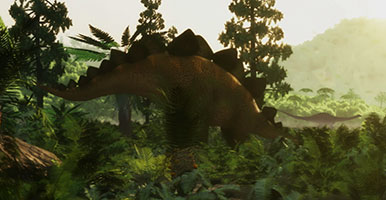
Find out what Museum scientists are revealing about how dinosaurs looked, lived and behaved.
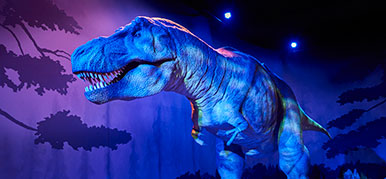
Visit the Dinosaurs gallery and see the ancient animals that once roamed Earth.
Don't miss a thing
Receive email updates about our news, science, exhibitions, events, products, services and fundraising activities. We may occasionally include third-party content from our corporate partners and other museums. We will not share your personal details with these third parties. You must be over the age of 13. Privacy notice.
Follow us on social media